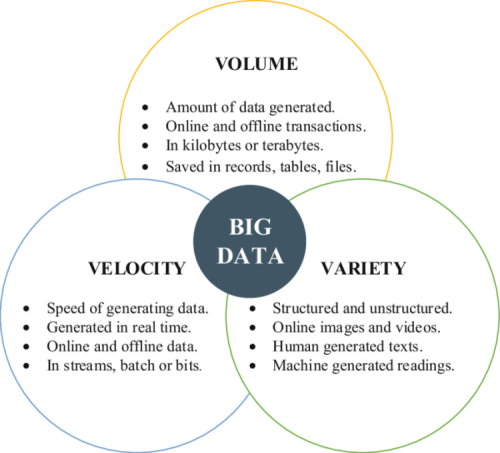Challenges Associated with Big Data in Aviation and Solutions from a Velocity Perspective
Big data has become a vital asset across many industries, and aviation is no exception. The immense volume, variety, and velocity of flight data present both opportunities and challenges. With critical data streams constantly being generated—such as flight telemetry, weather updates, passenger information, maintenance logs, and air traffic control communications—aviation professionals face the challenge of managing and processing large-scale data efficiently. One of the most significant aspects in aviation big data is its velocity, or the speed at which data is generated, processed, and acted upon.
This article will explore the challenges associated with big data in aviation and discuss strategies to overcome these challenges, especially focusing on the velocity aspect.

Key Challenges of Big Data in Aviation
1. Real-Time Data Processing
Aviation systems generate data in real time, from sensors on aircraft engines to real-time radar and weather reports. Processing this data fast enough to make actionable decisions is a major challenge.
2. Data Integration and Interoperability
Different aviation data sources often use different formats and standards. Integrating sensor data, flight schedules, maintenance reports, and ATC (Air Traffic Control) information is critical but can be complex.
3. Data Accuracy and Reliability
Aviation relies on high data accuracy to ensure safety. Erroneous or delayed data could lead to faulty decisions, compromising passenger and crew safety.
4. Scalability
As the number of flights and connected devices increases, the volume of data grows exponentially. Systems need to scale efficiently without compromising speed and performance.
5. Cybersecurity Risks
Handling critical flight data makes aviation systems a target for cyberattacks. Protecting big data environments without slowing down data processing is a key concern.
Velocity: The Critical Component of Big Data in Aviation
Velocity refers to the speed at which data is generated and must be processed in real time or near-real time. In aviation, timely data processing can be the difference between smooth operations and catastrophic outcomes. Examples of velocity in aviation include:
- Real-time monitoring of aircraft systems.
- Streaming weather updates for flight path optimization.
- Air traffic control communications and routing decisions.
To harness the velocity of big data in aviation, several technologies and strategies can be employed.
| Analysis Type | Purpose | Key Techniques | Applications |
| Descriptive | Summarize what happened | Dashboards, summary statistics | Performance reports, trend analysis |
| Diagnostic | Explain why it happened | Root cause analysis, regression | Failure diagnosis, delay investigation |
| Predictive | Forecast future outcomes | Machine learning, time series analysis | Demand forecasting, behavior prediction |
| Prescriptive | Recommend actions based on insights | Optimization models, decision trees | Resource allocation, flight routing |
| Exploratory | Detect hidden patterns and insights | Data mining, clustering | Market segmentation, anomaly detection |
| Causal | Establish cause-and-effect | A/B testing, experiments | Campaign effectiveness, accident analysis |
| Inferential | Generalize findings from samples | Hypothesis testing, confidence intervals | Surveys, passenger preference analysis |
| Real-time | Analyze data instantly | Stream processing, live dashboards | Fraud detection, real-time flight monitoring |
Overcoming Big Data Challenges with a Velocity-Focused Approach
1. Adopt Edge Computing for Real-Time Processing
Challenge Addressed: Slow data processing due to centralized data centers.
Solution: Edge computing processes data closer to its source, such as on the aircraft itself or at nearby ground stations. This reduces latency and allows real-time analysis of critical data like engine health monitoring or flight performance metrics.
Example: Aircraft can use onboard systems to analyze sensor data in-flight, triggering real-time alerts for maintenance or anomalies without waiting for ground-based processing.
2. Implement Stream Processing Frameworks
Challenge Addressed: Handling high-speed data streams.
Solution: Stream processing frameworks like Apache Kafka or Apache Flink allow continuous data ingestion and real-time analytics. These frameworks are ideal for processing high-velocity data, such as live weather feeds or radar updates.
Example: Airlines can use stream processing to update flight paths dynamically based on changing weather conditions, optimizing safety and fuel efficiency.
3. Utilize AI and Machine Learning for Predictive Insights
Challenge Addressed: Delays in decision-making due to data volume.
Solution: Machine learning models can quickly process large data sets to identify patterns and predict outcomes. For example, AI can predict potential mechanical failures based on sensor data, allowing airlines to perform maintenance proactively.
Example: Predictive maintenance systems analyze high-speed data streams from engines and mechanical components, identifying issues before they lead to delays or safety concerns.
4. Ensure Data Quality through Automated Validation
Challenge Addressed: Inaccurate or unreliable data.
Solution: Automated validation checks can be implemented within data pipelines to flag inconsistencies or errors in real time. This ensures that only high-quality data is acted upon.
Example: Automated systems can validate incoming airspeed and altitude data, ensuring pilots and air traffic controllers receive accurate information.
5. Enhance Scalability with Cloud Solutions
Challenge Addressed: Managing growing data volumes without performance degradation.
Solution: Cloud-based infrastructure allows for scalable storage and processing power on demand. Cloud platforms provide distributed computing environments where high-speed processing can be achieved.
Example: Airlines and airports can leverage cloud-based big data platforms to analyze passenger flow, optimize security checks, and manage baggage handling in real time.
6. Implement Robust Cybersecurity Measures
Challenge Addressed: Protecting high-velocity data streams from attacks.
Solution: Encryption, intrusion detection systems, and AI-based threat detection should be applied to secure data pipelines without introducing significant latency.
Example: Secure data transfer protocols can protect sensitive flight data during transmission between aircraft and ground control centers.
Benefits of Efficient Big Data Velocity Management
- Improved Safety: Faster processing of flight data allows early detection of anomalies, reducing the risk of accidents.
- Operational Efficiency: Real-time decision-making optimizes flight paths, fuel consumption, and maintenance schedules.
- Enhanced Passenger Experience: Dynamic re-routing and proactive maintenance minimize delays and improve overall service.
- Predictive and Preventive Maintenance: Avoid costly unscheduled repairs through early detection of mechanical issues.
Conclusion
As aviation continues to generate and rely on high-speed, high-volume data streams, addressing the challenges associated with big data velocity is crucial. By adopting edge computing, stream processing frameworks, AI-driven analytics, and cloud solutions, the aviation industry can overcome these challenges and unlock the full potential of big data. This will not only enhance operational efficiency and safety but also pave the way for innovation and sustainable growth within the sector.
Effective management of big data velocity is more than a technological necessity—it’s a strategic advantage that aviation stakeholders must embrace to thrive in a data-driven future.
Recommended article: Aviation Big Data Project: Turbulence Prediction and Flight Route Optimization


